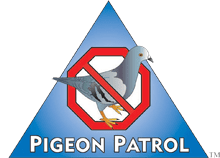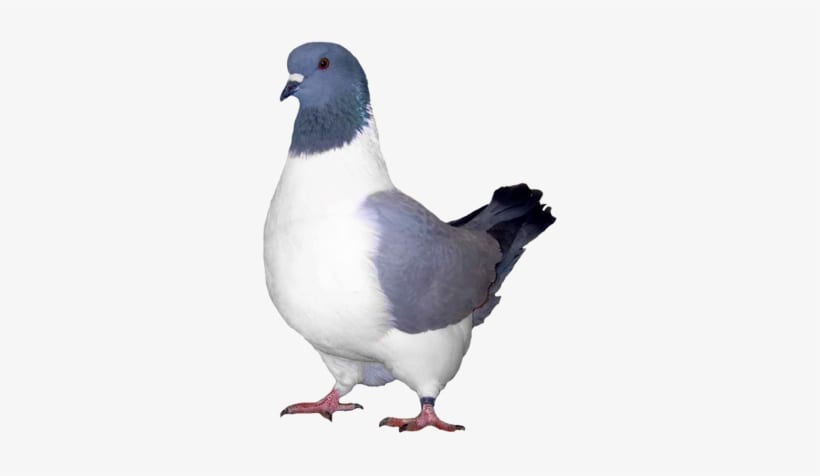
by Pigeon Patrol | Nov 23, 2020 | Bird Deterrent Products, Bird Netting, Pigeon Control, Pigeon Droppings, Pigeon Patrol's Services, Pigeons in the News
Ever heard of ice pigeons? No? keep on reading to find out what they are!
Ice Pigeons
The Ice pigeon is a breed of fancy pigeon developed over many years of selective breeding. Ice pigeons, along with other varieties of domesticated pigeons, are all descendants from the rock pigeon. In 1846, Charles Darwin is known to have crossbred the Ice pigeon in order to ascertain colour patterns.
it is one of the oldest of the German color pigeon breeds and was developed over many years of selective breeding.The breed is actually from the South Germany. And it was first developed in the region from eastern Germany to western Poland, with most early breeding in Saxony and Silesia.
Where Do They Live?
And it was first developed in the region from eastern Germany to western Poland, with most early breeding in Saxony and Silesia. The Ice pigeon and other varieties of domesticated pigeons, all are descendants from the wild or feral rock pigeon.
Appearance
This pigeon is an average sized bird which is named and known for it’s ‘ice-blue’ coloration. It’s head is slightly oblong, and have smooth head.
It has several varieties, which are differing in the type and color of their wing pattern. But the basic color of these birds is a pale grey.
Eyes of these birds are of different color depending on the variety. The black barred and checked version has orange to yellow orange colored eyes. And all other varieties have black eyes.
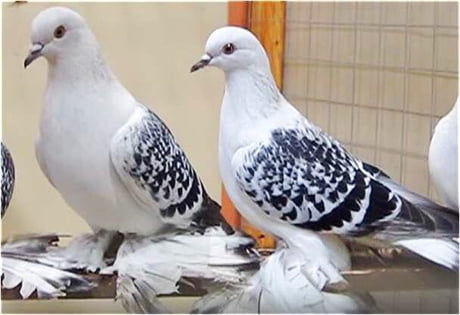
| Ice Pigeon | Breed Profile |
| Breed Name |
Ice |
| Other Name |
Polish: Lazurek; German: Eistaube |
| Breed Purpose |
Exhibition, ornamental, pets |
| Special Notes |
Beautiful, calm and gentle in nature, good for ornamental purpose, good for exhibition, good for raising as pets |
| Breed Class |
Small to medium |
| Climate Tolerance |
All climates |
| Flying Ability |
Average |
| As Pets |
Good |
| Color |
Many |
| Rarity |
Common |
About Pigeon Patrol:
Pigeon Patrol Products & Services is the leading manufacturer and distributor of bird deterrent (control) products in Canada. Pigeon Patrol products have solved pest bird problems in industrial, commercial, and residential settings since 2000, by using safe and humane bird deterrents with only bird and animal friendly solutions. At Pigeon Patrol, we manufacture and offer a variety of bird deterrents, ranging from Ultra-flex Bird Spikes with UV protection, Bird Netting, 4-S Gel and the best Ultrasonic and audible sound devices on the market today.
Contact us at 1- 877– 4– NO-BIRD, (604) 585-9279 or visit our website at www.pigeonpatrol.ca
Pigeon / Pigeon Patrol / Pigeons Roosting / Vancouver Pigeon Patrol / Bird Control / Surrey Pigeon Control / Pest / Vancouver Pigeon Blog / Birds Inside Home / Pigeons in the cities / Ice Pigeons
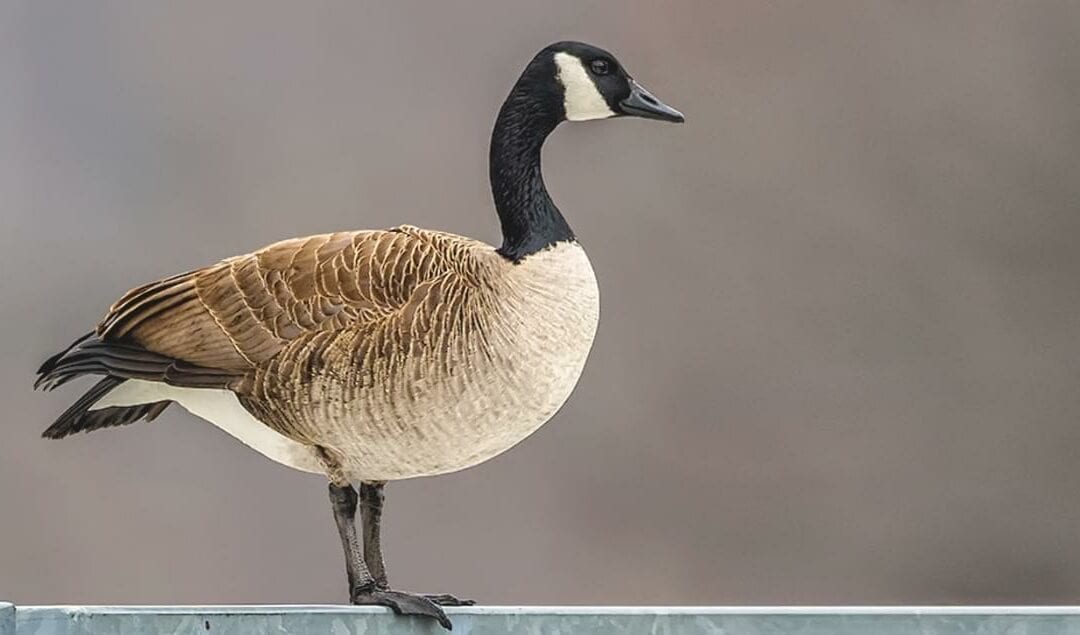
by Pigeon Patrol | Nov 15, 2020 | Animal Deterrent Products, Bird Deterrent Products, Bird Law, Bird Netting, Bird Spikes, Columbidae, Doves, history of pigeons, Pigeon Control, Pigeon Droppings
Looking for more information about which birds are considered pests? Read on to learn more!
The Birds That Are Pests
There are six types of birds found in Canada can be classified as nuisance pests, which are the house sparrows, starlings, pigeons, woodpeckers, gulls, and Canada geese
The house sparrow is a bird of the sparrow family Passeridae, found in most parts of the world. It is a small bird that has a typical length of 16 cm and a mass of 24–39.5 g. Females and young birds are coloured pale brown and grey, and males have brighter black, white, and brown markings
Starlings are small to medium-sized passerine birds in the family Sturnidae. The name “Sturnidae” comes from the Latin word for starling, sturnus. Many Asian species, particularly the larger ones, are called mynas, and many African species are known as glossy starlings because of their iridescent plumage
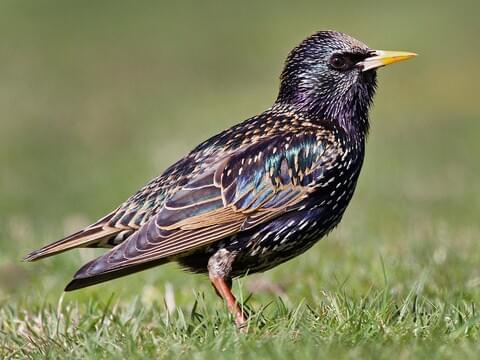
Pigeon
Next on the list is the Pigeon, Also known as the rock dove. Pigeons are known for causing diseases and damage due to their droppings. The droppings trigger human slips and falls as well as accelerating the aging of structures and statues.. Other pests that live on these birds are fleas, lice, mites, ticks and more. Pigeons vary in color but most of them are bluish gray with 2 black bands on the wing and black tip to the tail.
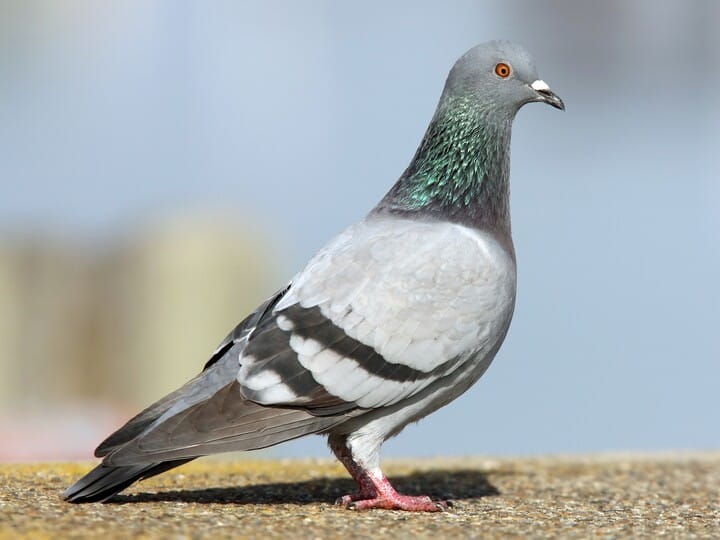 Source
Source
Woodpeckers
Woodpeckers are part of the family Picidae, that also includes the piculets, wrynecks, and sapsuckers. Members of this family are found worldwide, except for Australia, New Guinea, New Zealand, Madagascar, and the extreme polar regions. A woodpecker will attack for many reasons. The attack can be for food, shelter or to attract a mate. The reasons for attack include finding insects for food, often carpenter bees, or for a nest cavity or roosting site, or for other social reasons.
Gulls
Gulls, or colloquially seagulls, are seabirds of the family Laridae in the suborder Lari. They are most closely related to the terns and only distantly related to auks, skimmers and even more distantly to waders
Canada Geese
The Canada goose is a large wild goose species with a black head and neck, white cheeks, white under its chin, and a brown body. It is native to arctic and temperate regions of North America, and its migration occasionally reaches northern Europe
How to identify Birds
Canadian bird pests vary in length, overall size, and colouration. The smallest pest bird species, house sparrows are approximately 14 to 18 cm long with a wingspan of 19 to 25 cm. At the other end of the spectrum, Canada geese boast a wingspan as long as 182 cm and range from 90 to 120 cm in length. Some of the most common bird colourations include shades of grey, white, black, and brown. Pigeons, which rank as arguably the most colourful bird pest, may appear with streaks of light blue, green, lilac, peach, and various other shades.
Signs of an infestation
Birds are not exactly stealthy creatures, and infestations usually become evident with the increased presence of adult birds, the frequent occurrence of chirping and other noises, the sighting of nests, and an increased quantity of droppings in the area.
Birds Removal
Modifying the surrounding environment can aid property owners in ridding buildings of nuisance birds. Netting or spike strips can be strategically positioned to deter or prevent birds from landing and nesting. Noise devices, such as generators that mimic the sounds that natural predators make, work best in agricultural settings, while visual scare tactics are effective in the short term or when paired with other prevention and exclusion techniques. For particularly aggressive birds and those protected by the Migratory Bird Treaty Act, call a fully licensed pest control professional to take care of the problem legally and effectively.
How to prevent Birds from invading
Monitor water accumulating at likely nesting sites, fix any broken or deficient drainage systems, cover outdoor garbage containers tightly, eliminate any notable sources of food.
Habitat, Diet, and Life Cycle
Habitat
Many of the pest birds in Canada are migratory species which fly south when the temperatures approach the freezing point. Many pest birds have a widely distributed population and benefit greatly from the development of cities and the distribution of human populations. Some species construct nests and raise their young in elevated areas, while others nest on the ground. Birds generally prefer to live in the immediate vicinity of a water source but have no trouble flying reasonable distances to collect food. Most species adapt well to various surroundings.
Diet
Pest birds mainly eat fruits, seeds, grains, and insects. Many species live in close proximity to people and often feed on human food like bread, popcorn, peanuts, cake, discarded restaurant fare, and similar items. Much to the dismay of farmers, pest birds frequently target crops and livestock feed, as well. Gulls and Canada geese in particular maintain special dietary preferences. Gulls often feed on fish, rodents, and carrion, while the geese mostly consume plants like cattails, clover, and grass.
Life Cycle
Without exception, birds mate and rear their young in the spring and summer months. On average, pest birds produce one or two broods each year. House sparrows, however, can produce as many as five generations annually. Most birds require an incubation period of two weeks, though the eggs of both Canada geese and gulls require nearly a month of incubation. Newly hatched birds then leave the nest after an average of two to four weeks of preening. Depending on a variety of factors, nuisance birds typically live between 2 and 10 years.
Commonly Asked Questions
How worried should I be about birds?
Pest birds can carry parasites like fleas, mites, and ticks, and transmit diseases to humans and livestock. Pigeon excrement often contains the fungal diseases histoplasmosis and cryptococcosis, which are especially dangerous to people with compromised immune systems.
Many bird species are noisy and can damage buildings and equipment. Not only are pest bird droppings unsightly, they can stick to buildings, potentially eroding the structure.
Pest birds can also create drainage issues and fire hazards by nesting in the small crevices, drains, and gutters of buildings. Many bird species are also aggressive towards humans or native bird populations.
However, dealing with pest birds can be difficult, due to the Migratory Bird Treaty Act, which protects certain species from trapping and relocation practices. Any attempt to remove a pest bird must also comply with the Fish & Wildlife Act.
While netting, spike strips, noise devices, and visual scare tactics may be valid options, often only a professional, licensed pest control service can meet the regulatory standards required when it comes to removing and keeping away pest birds.
About Pigeon Patrol:
Pigeon Patrol Products & Services is the leading manufacturer and distributor of bird deterrent (control) products in Canada. Pigeon Patrol products have solved pest bird problems in industrial, commercial, and residential settings since 2000, by using safe and humane bird deterrents with only bird and animal friendly solutions. At Pigeon Patrol, we manufacture and offer a variety of bird deterrents, ranging from Ultra-flex Bird Spikes with UV protection, Bird Netting, 4-S Gel and the best Ultrasonic and audible sound devices on the market today.
Contact us at 1- 877– 4– NO-BIRD, (604) 585-9279 or visit our website at www.pigeonpatrol.ca
Bird Gone, Pigeon Gone, Seagull Gone, Pigeon problems, 1-877-4NO-BIRD, 4-S Gel, Bird Control, Pigeon Control, bird repellent,, sonic bird repellent, stainless steel , bird spikes Vancouver, Ultra Sonic Bird Control, Bird Netting, stop aggressive pet birds Canada bird deterrents, Pigeon Pests, B Gone Pigeon, Pigeon Patrol, pest controller, pest control operator, pest control technician, Pigeon Control Products, humane pigeon, pigeon deterrents, pigeon traps, Pigeon repellents, stop aggressive pet birds Sound & Laser Deterrents, wildlife control, raccoon, skunk, squirrel deterrent, De-Fence Spikes, Dragons Den, Canada bird spikes, Canada pigeon, pigeon control, pigeon patrol, pigeon. destroy pigeons, crow, starling, Pigeon Habitat, Pigeon identifications, pigeon myths, stop aggressive birds, stop aggressive pet birds

by Pigeon Patrol | Nov 2, 2020 | history of pigeons
Where Are They Found?
The history of these pigeons were originally found wild in Europe, North Africa, and Western Asia, pigeons have become established in cities around the world. The species is abundant, with an estimated population of 17 to 28 million feral and wild birds in Europe alone and up to 120 million worldwide. These birds were introduced into North America in the early 1600’s. Window ledges and tall buildings mimic the rocky cliffs originally inhabited by their ancient ancestors in Europe. The pigeon has a long history of association with humans, having been used for food and entertainment for over 5,000 years. Source
How Many Species Are There?
Pigeons live worldwide except in the coldest regions and the most remote islands. About 250 species are known; two-thirds of them occur in tropical Southeast Asia, Australia, and the islands of the western Pacific, but the family also has many members in Africa and South America and a few in temperate Eurasia and North America. All members of the family suck liquids, rather than sip and swallow as do other birds, and all pigeon parents feed their young “pigeon’s milk,” the sloughed-off lining of the crop, the production of which is stimulated by the hormone prolactin. The nestling obtains this “milk” by poking its bill down the parent’s throat.
Pigeons are gentle, plump, small-billed birds with a skin saddle (cere) between the bill and forehead. All pigeons strut about with a characteristic bobbing of the head. Because of their long wings and powerful flight muscles, they are strong, swift fliers. Pigeons are monogamous; i.e., they mate for life, and the survivor accepts a new mate only slowly. The female lays two glossy white eggs in a flimsy nest that barely holds them. The female generally incubates the eggs by night, the male by day. The incubation period is 14 to 19 days, but the young are cared for in the nest for another 12 to 18 days. Source
Contact Us For Any Questions!
(604) 585-9279
About Pigeon Patrol:
Pigeon Patrol Products & Services is the leading manufacturer and distributor of bird deterrent (control) products in Canada. Pigeon Patrol products have solved pest bird problems in industrial, commercial, and residential settings since 2000, by using safe and humane bird deterrents with only bird and animal friendly solutions. At Pigeon Patrol, we manufacture and offer a variety of bird deterrents, ranging from Ultra-flex Bird Spikes with UV protection, Bird Netting, 4-S Gel and the best Ultrasonic and audible sound devices on the market today.
Contact us at 1- 877– 4– NO-BIRD, (604) 585-9279 or visit our website at www.pigeonpatrol.ca
Bird Gone, Pigeon Gone, Seagull Gone, Pigeon problems, pigeon spikes, 1-877-4NO-BIRD, 4-S Gel, Bird Control, Pigeon Control, bird repellent, Bird Spikes, sonic bird repellent, stainless steel bird spikes, bird spikes Vancouver, Ultra Sonic Bird Control, Bird Netting, Plastic Bird Spikes, Canada bird spike deterrents, Pigeon Pests, B Gone Pigeon, Pigeon Patrol, pest controller, pest control operator, pest control technician, Pigeon Control Products, humane pigeon spikes, History of pigeons, pigeon deterrents, pigeon traps, Pigeon repellents, Sound & Laser Deterrents, wildlife control, raccoon, skunk, squirrel deterrent, De-Fence Spikes, Dragons Den, Canada bird spikes, Canada pigeon, pigeon control, pigeon patrol, pigeon. Kill pigeons, crow, starling, Pigeon Habitat, Pigeon identifications, Pigeon Spikes, Ultrasonic Pest Repellers
The post History of Pigeons appeared first on Pigeon Patrol Canada – Bird Control Products & Services.
Filed Under: Pigeon Patrol’s Services

by Pigeon Patrol | Oct 20, 2020 | Bird Deterrent Products, Pigeon Control
Budget Friendly Pigeon Deterrents
Looking to try more pigeon deterrents to see which one works best for you? First off, Pigeons have excellent eyesight & are startled by unexpected visual signals or recognizable predators. Here are 3 budget friendly bird deterrent products that could help you keep these pests and other birds such as sparrows, and crows away from your property
1) Magnetic Bird Defender
Thanks to technological innovations, you can find several kinds of equipment to scare birds away. One is you can use this powerful magnet to repel the birds. This magnet is flashy and interferes with the birds’ sense of direction and confuses them which will cause them to stay away from the radius of the magnet’s field. The number of magnets or their strength will depend on the size of your property. Pigeons and other birds tend not to approach any area where there is a magnetic field stronger than the terrestrial magnetic field. You can hang these on your balcony, porch, front door, wherever these pests may be
Get your magnetic bird defender here https://www.pigeonpatrol.ca/product/magnetic-bird-defender/

Source
2) Reflective Owl Repellent
These owl repellents are budget friendly and effectively scares birds away because of the reflective print. The pigeon’s eye is one-half the weight of its brain, whereas man’s eye is only one-fiftieth of his brain weight. Pigeons have a very wide visual field of around 340° compared to the 180°of humans. So when they come across these reflective owls, there eyes get irritated and they can’t stand it. Another reason why these owls are effective is simple: Owls prey on pigeons and pigeons are not the smartest things on wings. Confronted with something that looks like an owl, a pigeon will assume the worst and fly away. The ruse is hardly new. For years, gardeners and boaters have used fake owls to scare off birds. This owl-shaped surface contains hundreds of three-dimensional light-refraction spots. When the sunshine comes to this surface, it is immediately reflected in various rays of colors. Additionally, each decoy is attached with two hawk bells, and these will unpredictably emit sounds to startle the birds
CALL US TO ORDER THESE REFLECTIVE OWLS (604) 585-9279

3) Reflective Ribbons
One of the classic and primary tools is the bird repellent tape, This is another bird control applying the refractive holographic technique on both sides. This tape is about 5 centimeters width and nearly 100 meters long, which is enough to cover my backyard. It does not consume much of my time and effort to hang up the tapes. I cut them into strips about 40 centimeters long, and stick them to the wall with layers of adhesive tapes, or tight with thin rope, dental floss, any kind of thin string appearing in my kitchen. Or I sometimes cut them into approximately one-meter strips and tight upon the tree branches. Actually, it is not compulsory to hang on the highest spots, but scare tape should be directly contacted with sun rays and wind so that they could flail wildly to create flashing light and flapping sound.
CALL US TO ORDER THESE REFLECTIVE TAPES (604) 585-9279
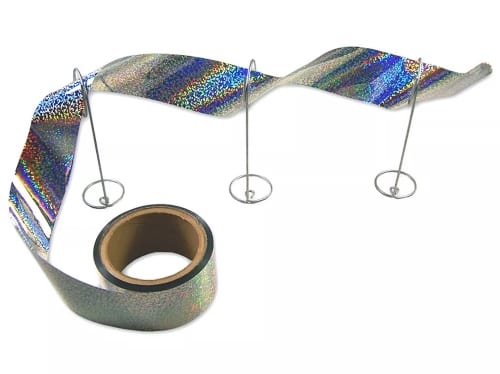
With visual deterrents, surprise & change are vital. Birds quickly acclimate to static scares, so we don’t sell them. Pigeon Patrol has these visual products that contain some element of change or movement, making them more effective than the stationary units offered in the marketplace. For large areas, use more visuals — either the same type or a variety. Change the location of your visual deterrents from time to time to maintain its effectiveness in keeping away the bird pests.
About Pigeon Patrol:
Pigeon Patrol Products & Services is the leading manufacturer and distributor of bird deterrent (control) products in Canada. Pigeon Patrol products have solved pest bird problems in industrial, commercial, and residential settings since 2000, by using safe and humane bird deterrents with only bird and animal friendly solutions. At Pigeon Patrol, we manufacture and offer a variety of bird deterrents, ranging from Ultra-flex Bird Spikes with UV protection, Bird Netting, 4-S Gel and the best Ultrasonic and audible sound devices on the market today.
Contact us at 1- 877– 4– NO-BIRD, (604) 585-9279 or visit our website at www.pigeonpatrol.ca
Bird Gone, Pigeon Gone, Seagull Gone, Pigeon problems, pigeon spikes, 1-877-4NO-BIRD, 4-S Gel, Bird Control, Pigeon Control, bird repellent, Bird Spikes, sonic bird repellent, stainless steel bird spikes, bird spikes Vancouver, Ultra Sonic Bird Control, Bird Netting, Plastic Bird Spikes, Canada bird spike deterrents, Pigeon Pests, B Gone Pigeon, Pigeon Patrol, pest controller, pest control operator, pest control technician, Pigeon Control Products, humane pigeon spikes, pigeon deterrents, pigeon traps, Pigeon repellents, Sound & Laser Deterrents, wildlife control, raccoon, skunk, squirrel deterrent, PIGEON DETERRENTS, De-Fence Spikes, Dragons Den, Canada bird spikes, Canada pigeon, pigeon control, pidgon patrol, pigeon. Kill pigeons, crow, starling, Pigeon Habitat
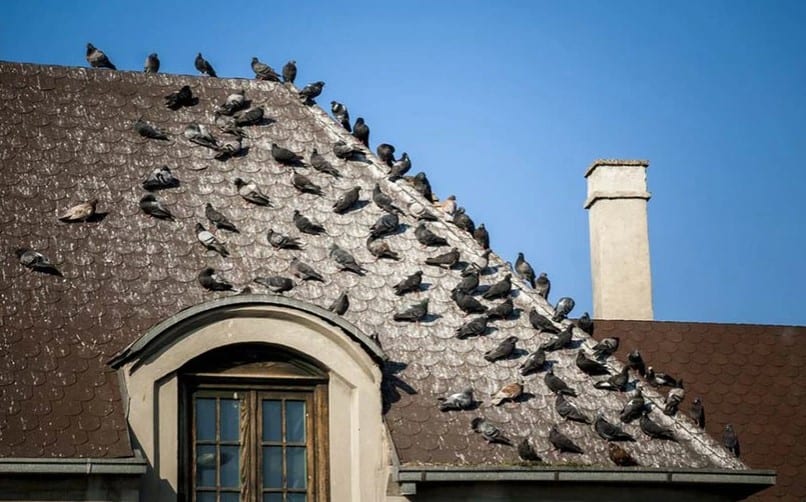
by Pigeon Patrol | Oct 20, 2020 | Bird Deterrent Products, Bird Netting, Bird Spikes, Pigeon Droppings, Pigeon Spikes
Danger of Pigeon Droppings
Although pigeons themselves are not considered to be a danger to humans, their droppings is a different story. Pigeons transmit diseases through their droppings and can easily affect someone with a weakened immune system if near by.
Pigeon droppings that are infected with bacteria or viruses are often left on the street, windowsills and cars to dry out. Once they do, they become a powder, which is blown or kicked into the air and then inhaled. The inhalation of this powder is one way that the pathogens that can cause disease can be spread to us.
Pathogens
According to Medical News Today, the most common pathogens which can cause disease transmitted from pigeons to humans are:
- E. coli. This occurs when bird droppings land in a water or food supply and are then consumed by humans. This can typically be avoided by washing food thoroughly before eating. Symptoms include nausea, fever and cramps.
- St. Louis encephalitis.This disease is spread by mosquitoes after they feed on a bird that carries the pathogen that spreads St. Louis encephalitis. This inflammation of the nervous system is dangerous to all age groups, but can be particularly dangerous and even fatal in adults over 60 years old. Symptoms include drowsiness, headache and fever.
- Histoplasmosis.This respiratory disease occurs as a result of a fungus growing in pigeon droppings and can be fatal.
- Candidiasis.This disease is also a respiratory condition caused by a fungus or yeast found in droppings. The areas affected include skin, mouth, the respiratory system, intestines and the urogenital tract, particularly in women.
- Salmonellosis.This disease is commonly called “food poisoning” and spreads via infected droppings turning into dust and contaminating food and food preparation surfaces prior to consumption.
Pigeons are also carriers of mites, fleas, and West Nile virus, and all of which can cause discomfort and potentially serious health issues in humans.
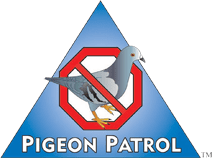
If you are cleaning up or come into contact with droppings, you should take precautions. Wash your hands and clean any exposed skin before eating, drinking or putting your hands near your mouth. Likewise, if you are feeding or handling birds, wash your hands afterwards. If you have a compromised immune system, including from HIV/AIDS or cancer, you should not clean up droppings.
Destroys Cleanliness of Property
Pigeon droppings are unsightly and can cause problems by making pavements and steps slippery, particularly in wet weather. Droppings can also corrode stonework and damage buildings. Nesting material, droppings and dead birds may block gutters and drains leading to water damage to buildings. Pigeon droppings are quite high in uric acid, which corrodes car exteriors like no one’s business. With an average pH of about 3, dried bird poop will peel away clearcoats, bleach paint, and leave cartoonish etchings of itself even after a car wash.
Pigeon droppings can cause severe damage to not just your roof but also other parts of your house. Some of the havoc birds poop can cause to your roof include:
Uric Acid
Bird poop contains uric acid, which can damage your roof. Since birds don’t urinate, the only way they could get rid of nitrogenous waste from their body system is through their poop. The acidic content of the white liquid can wreak havoc on materials like concrete, car paint, and roofing materials. The most vulnerable roof material to uric acid is the asphalt shingles.
Effect on Solar Panel
Roof-mounted solar panels have become a modern haven for pigeons and other bird species. This is so because solar panels provide warmth and shelter from the wind and rain. More so, it is a perfect spot for nesting, which ultimately results in massive bird dropping problems. Apart from the fact that these birds cause damage to the solar panel wiring, they also create a mess by leaving their droppings on top of them. These droppings, if left to sit for an extended period of time , blight solar panels and can render the system useless.
Blocked Gutters
Pigeons picking on dried poop for bugs can drop these waste into your gutters. These bird droppings contain seeds that may likely create additional problems for your drainage system. When a bird poop is left for long on your roof, wind or rain may eventually wash the bird poop and seeds into the gutters. These seeds can grow into weeds and shrubs in the gutter given the right conditions, thus affecting the flow of water. A clogged gutter will eventually lead to roof leakages. So make sure you clean your gutters regularly to ensure that they are free of debris and other waste products left by pigeons.
Moss Growth
Moss thrives in shady, damp places and are commonly found on the roof. Failure to tackle moss growth heads on can result in water leaks and damage. In addition, it can clog your drainage and gutters. Moss retains moisture, and this could further hamper the efficiency of your roof materials. What is for certain is that if birds and pigeons regularly leave droppings on your roof, the moss problem can be difficult and more expensive to contain. The nutrients from pigeon poop stimulate moss growth. More reasons why you need to get rid of pigeons and bird pests from your roof.
Bird Laws
Some laws protect native birds. So you need to follow laid down protocols when getting rid of them. Some of the legal methods of preventing birds nesting on your roof include roof spikes and bird deflectors. If you don’t want to face the wrath of the law, then make sure you contact reputable bird control service for assistance. Read More About Bird Laws Here
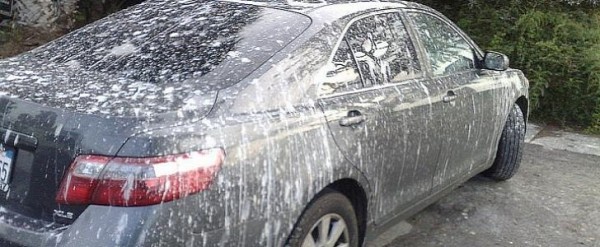
Source
About Pigeon Patrol:
Pigeon Patrol Products & Services is the leading manufacturer and distributor of bird deterrent (control) products in Canada. Pigeon Patrol products have solved pest bird problems in industrial, commercial, and residential settings since 2000, by using safe and humane bird deterrents with only bird and animal friendly solutions. At Pigeon Patrol, we manufacture and offer a variety of bird deterrents, ranging from Ultra-flex Bird Spikes with UV protection, Bird Netting, 4-S Gel and the best Ultrasonic and audible sound devices on the market today
Contact us at 1- 877– 4– NO-BIRD, (604) 585-9279 or visit our website at www.pigeonpatrol.
Bird Gone, Pigeon Gone, Seagull Gone, Pigeon problems, pigeon spikes, 1-877-4NO-BIRD, 4-S Gel, Bird Control, Pigeon Control, bird repellent, Bird Spikes, sonic bird repellent, stainless steel bird spikes, bird spikes Vancouver, Ultra Sonic Bird Control, Bird Netting, Plastic Bird Spikes, Canada bird spike deterrents, Pigeon Pests, B Gone Pigeon, Pigeon Patrol, pest controller, pest control operator, pest control technician, Pigeon Control Products, humane pigeon spikes, pigeon deterrents, pigeon traps, Pigeon repellents, Sound & Laser Deterrents, wildlife control, raccoon, skunk, squirrel deterrent, De-Fence Spikes, Dragons Den, Canada bird spikes, Canada pigeon, pigeon control, pidgon patrol, pigeon. Kill pigeons, crow, starling, Pigeon Habitat, Danger of Pigeon


